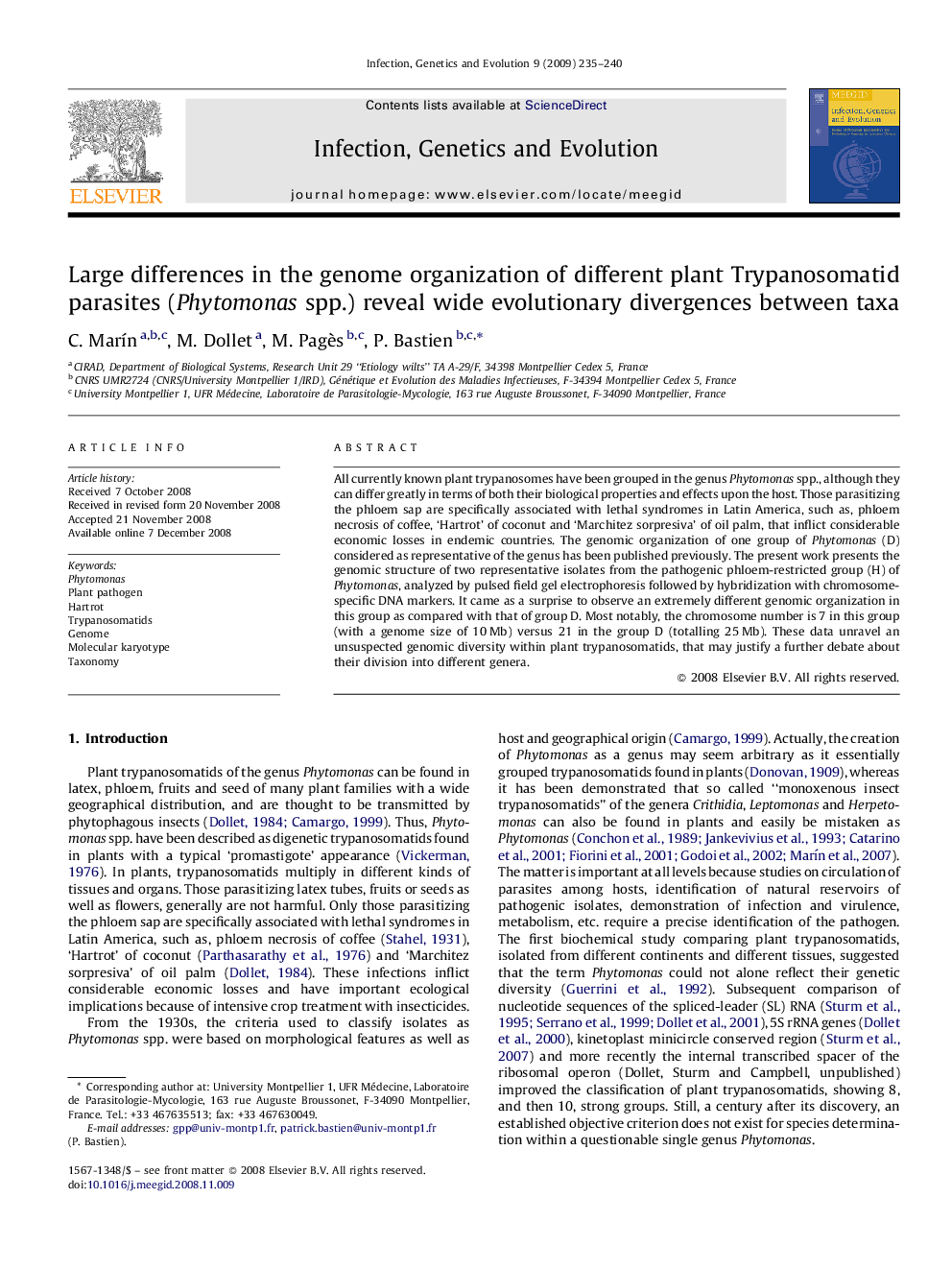| Article ID | Journal | Published Year | Pages | File Type |
|---|---|---|---|---|
| 5911958 | Infection, Genetics and Evolution | 2009 | 6 Pages |
Abstract
All currently known plant trypanosomes have been grouped in the genus Phytomonas spp., although they can differ greatly in terms of both their biological properties and effects upon the host. Those parasitizing the phloem sap are specifically associated with lethal syndromes in Latin America, such as, phloem necrosis of coffee, 'Hartrot' of coconut and 'Marchitez sorpresiva' of oil palm, that inflict considerable economic losses in endemic countries. The genomic organization of one group of Phytomonas (D) considered as representative of the genus has been published previously. The present work presents the genomic structure of two representative isolates from the pathogenic phloem-restricted group (H) of Phytomonas, analyzed by pulsed field gel electrophoresis followed by hybridization with chromosome-specific DNA markers. It came as a surprise to observe an extremely different genomic organization in this group as compared with that of group D. Most notably, the chromosome number is 7 in this group (with a genome size of 10Â Mb) versus 21 in the group D (totalling 25Â Mb). These data unravel an unsuspected genomic diversity within plant trypanosomatids, that may justify a further debate about their division into different genera.
Related Topics
Life Sciences
Agricultural and Biological Sciences
Ecology, Evolution, Behavior and Systematics
Authors
C. MarÃn, M. Dollet, M. Pagès, P. Bastien,
